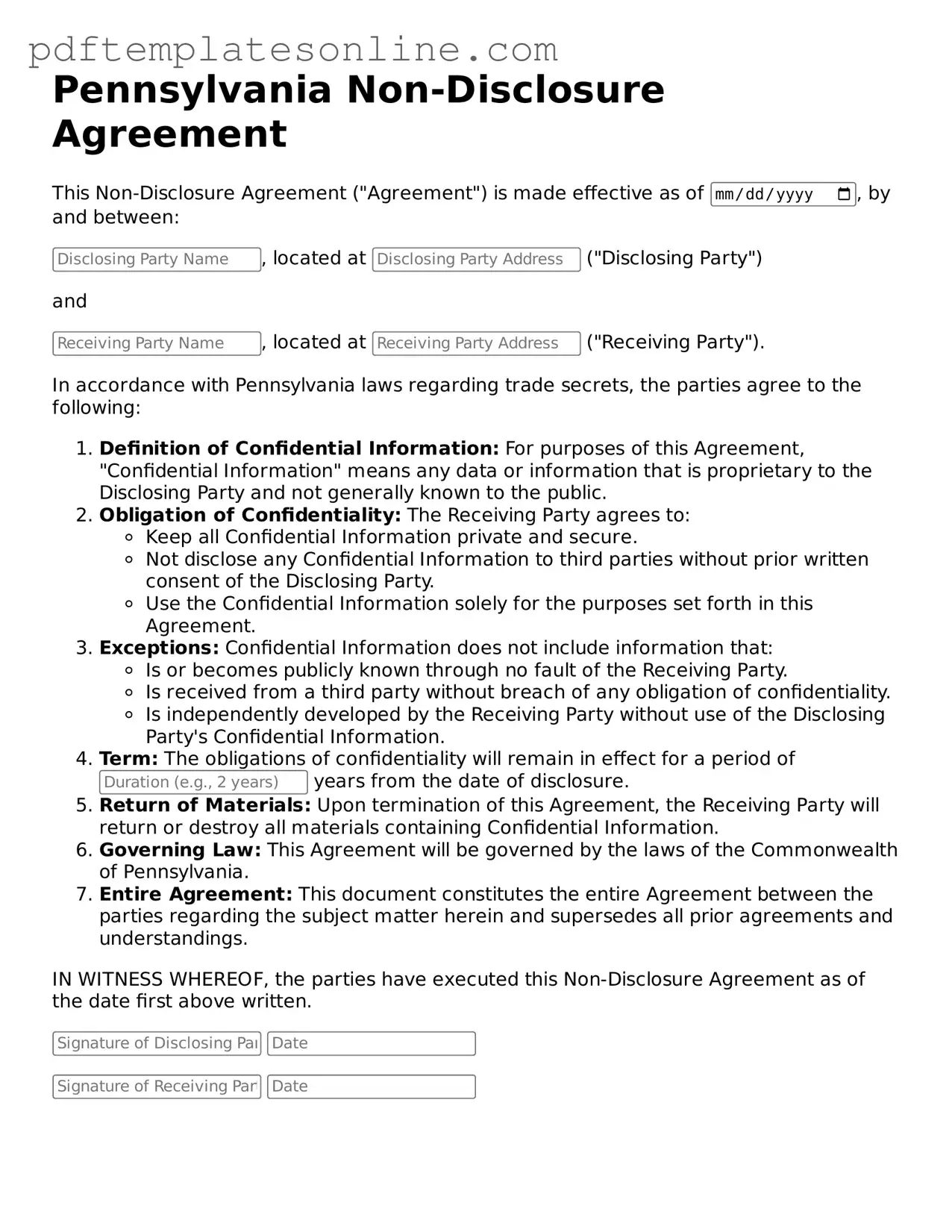Filling out a Pennsylvania Non-disclosure Agreement (NDA) can be straightforward, but many people make mistakes that can lead to complications later. One common error is not clearly defining the confidential information. If the NDA does not specify what is considered confidential, it can create confusion and weaken the agreement's effectiveness.
Another mistake is failing to include the duration of the confidentiality obligation. Without a clear timeframe, the agreement may leave both parties unsure of how long they must maintain confidentiality. This can lead to disputes down the line.
Many people also overlook the importance of identifying all parties involved. If a party is not named correctly, it can render the agreement unenforceable. Always ensure that the names and roles of everyone involved are accurate.
Some individuals forget to review the entire document before signing. Rushing through the process can lead to missed clauses or terms that could affect their rights. Taking the time to read the NDA thoroughly is essential.
Another common mistake is assuming that verbal agreements are sufficient. A signed NDA is crucial for legal protection. Relying on a handshake or verbal promise can leave one vulnerable.
People sometimes fail to consult with a legal professional. While the NDA form may seem simple, having a lawyer review it can provide valuable insights and help avoid pitfalls. Legal advice can ensure that the agreement meets all necessary legal standards.
Not considering the consequences of a breach is another mistake. Individuals should understand the potential repercussions of violating the NDA. This understanding can help emphasize the importance of adhering to the agreement.
In some cases, individuals may not tailor the NDA to their specific situation. Using a generic template without modifications can lead to terms that do not adequately protect one's interests. Customizing the agreement is often necessary.
Finally, many forget to keep a copy of the signed NDA. Having a record of the agreement is essential for reference and enforcement. Without it, proving the existence of the NDA can be challenging.
